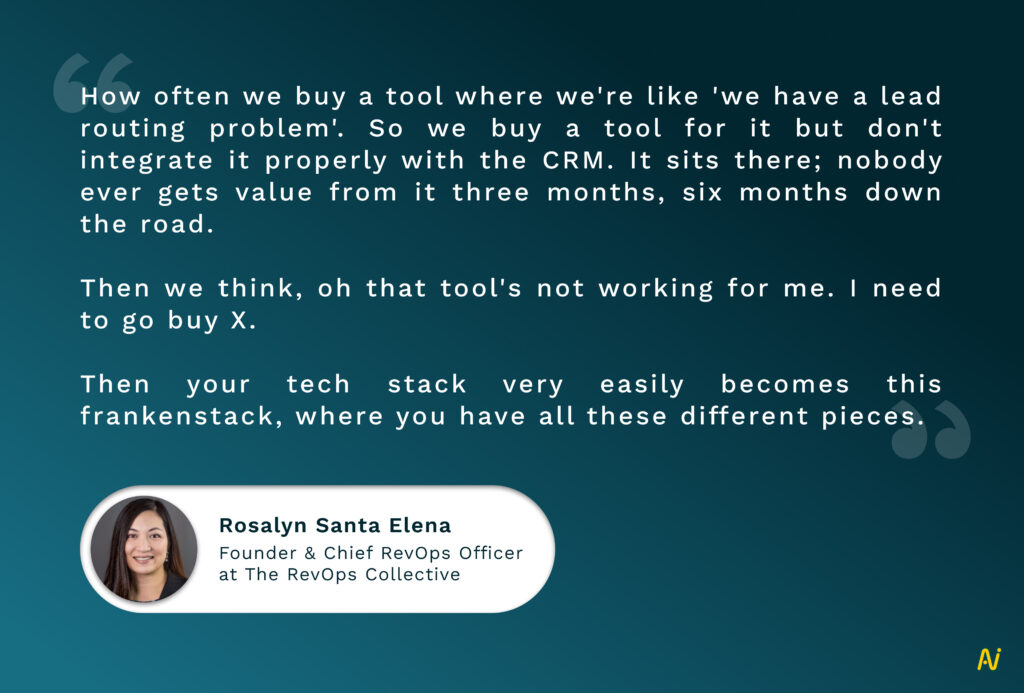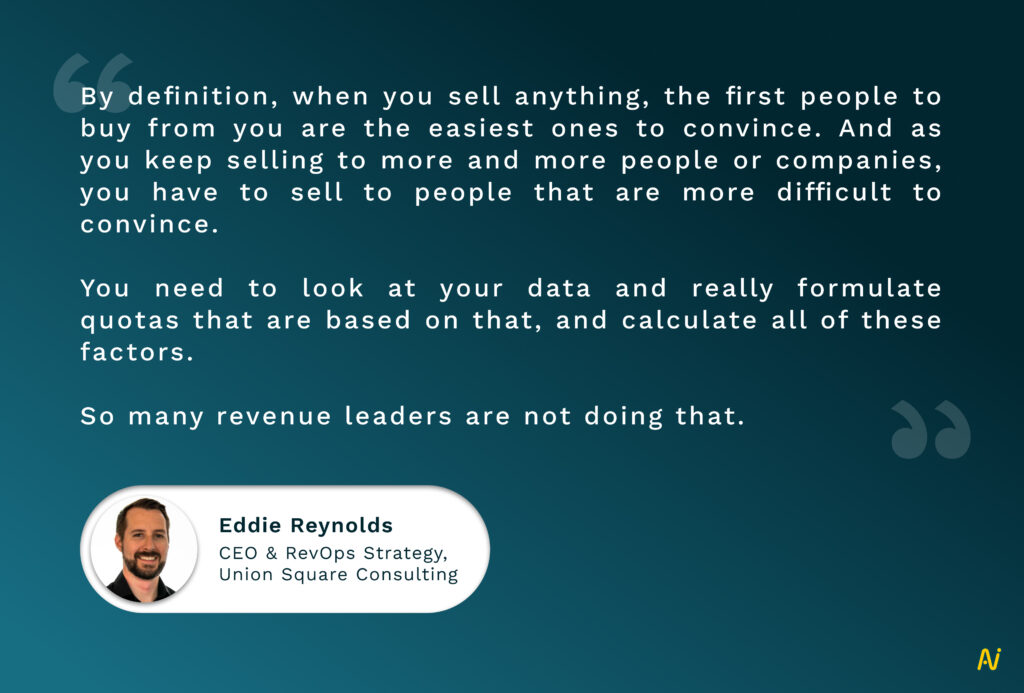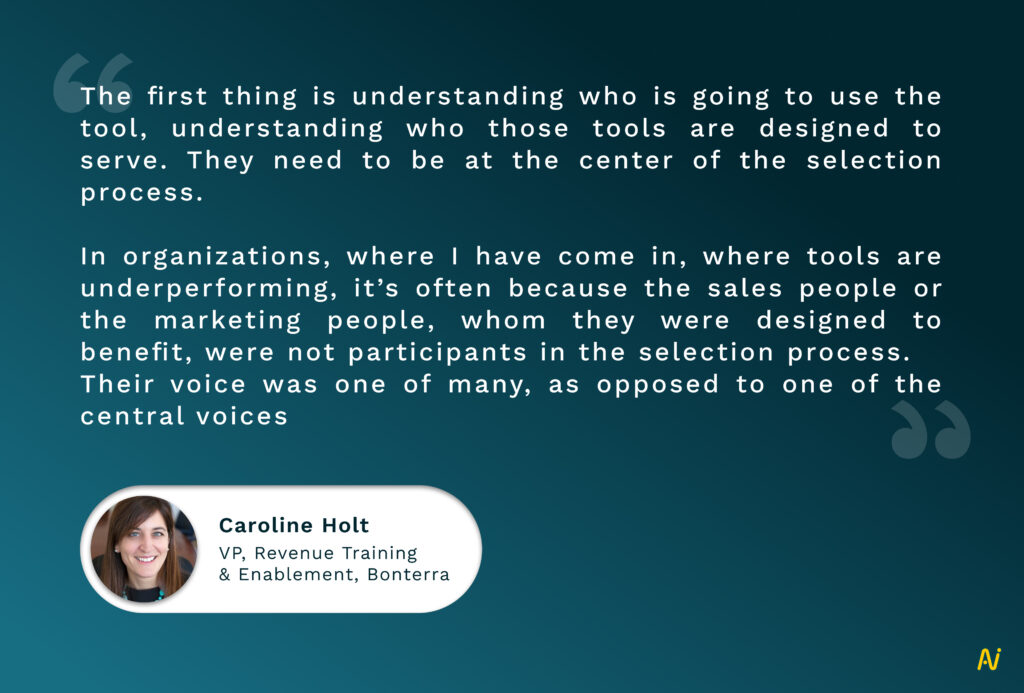Revenue leaders are being asked to deliver effective growth results with minimal costs. Re-evaluating their tech stack needs comes as a natural response to this. But a large number of organizations continue to incur a lot of tech debt from their investments. And this deviates them from their goal of achieving sustainable growth.
In this blog, we will tell you what tech debt really means, what makes it a major source of revenue leakage and how you can steer clear of it to prevent your revenue from burning.
Tech Debt. What’s That?
In simple terms, tech debt is the cost to the company arising from inefficiencies in the revenue tech stack.
Consider revenue operations like the engine of a car.
➤ To improve its performance, you decide to make a few improvements in the form of revenue tools.
➤ You invest heavily in a few shiny tools, and the engine runs faster, for a while.
➤ Gradually, the tools don’t work well with the revenue engine. You start losing power (ROI) and speed (revenue) quickly.
➤ The car has to consume more fuel (time and effort) to reach the destination. For every moment you lose speed, you also lose valuable revenue.
➤ The blame falls on the vendor from whom you purchased the tools.
➤ Ultimately, you spend more on maintaining the engine than the ROI you received.
➤ You replace underperforming parts with new ones to catch up to your competitors. But again, the engine doesn’t generate enough value.
And so, the vicious cycle of revenue tech investment continues.
This vicious cycle of tech debt eventually leads to revenue leakage. As The Atlantic defines, revenue leakage is “the avoidable loss of revenue due to system failures in visibility, process, and execution.”
Tech Debt Amplifies Revenue Leakage
There are multiple reasons why tech debt increases revenue leakage. Identifying these is the first step to solving the tech debt problem.
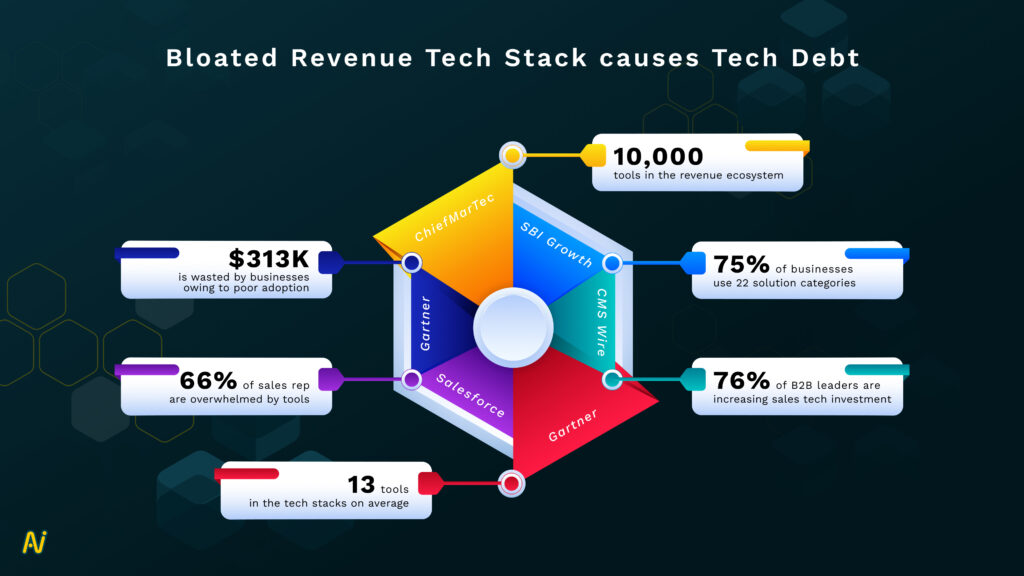
1. Bloated tech stack & revenue pipeline
In the overall revenue ecosystem, there are nearly 10,000 tools available. That’s because most businesses use multiple tools for revenue functions – including CRM, forecasting, analytics, and more.
Some of these tools are table stakes for revenue generation. But most of them add little value to pipeline generation, and end up wasting resources.
Take the CRM for example.
CRM is a steep, upfront investment owing to its importance across revenue teams. And yet, poor CRM data hurts the ROI you can derive from the system. Without clean data and integrated processes, the CRM turns into a system of non-actionable insights.
As companies gear up to sail through the recession, they’re re-evaluating their tech purchases.
Companies continue to search for and add tools to their tech stacks, to increase efficiency. 76% of B2B leaders are already increasing or planning to increase investments in sales technologies this year.
The result? On average, an organization can have a tech stack as tall as 13 tools.
But this old revenue playbook of “more tools, more revenue” isn’t fuelling growth anymore. Leaders are learning this the hard way after they wasted $313,000, on average, on sales tools that reps didn’t fully adopt.
So, where does the revenue tech problem become a revenue leakage problem? When this tech stack gets bloated with tools that add no value.
a. Reps are confused with the tech stack
66% of sales reps feel overwhelmed by the number of revenue tools. 86% need clarification about which tool should be used for which task.
If reps can’t figure out what a tool does, they can’t fully understand its use cases. This creates gaps in the revenue funnel.
For instance, a conversational tool could offer automated transcription of buyer-seller discussions. However, the seller doesn’t know about the feature. They note key discussion points in a notebook or digital notepad.
Here’s how this situation could play out:
- The seller may record important points to sales
- But marketing and customer success teams get no valuable data.
- If any one party in the revenue funnel doesn’t have complete information, it could breed inaccurate insights for decision-makers.
b. Reps manage their pipeline poorly
Marketing and sales reps work hard to fill the pipeline with leads. Particularly when the quotas are set too high, based on unrealistic expectations.
To hit targets, sales reps are wary of dropping leads from the pipeline, even if they’re no longer viable. More leads in the pipeline don’t necessarily point to more revenue.
When pipelines have had too many unhealthy leads to eat, they bloat.
Bloated pipelines are dangerous. They give skewed insights, wasting your time and resources. Worse, they overshadow opportunities that could become profitable deals.
2. Drag on sales productivity
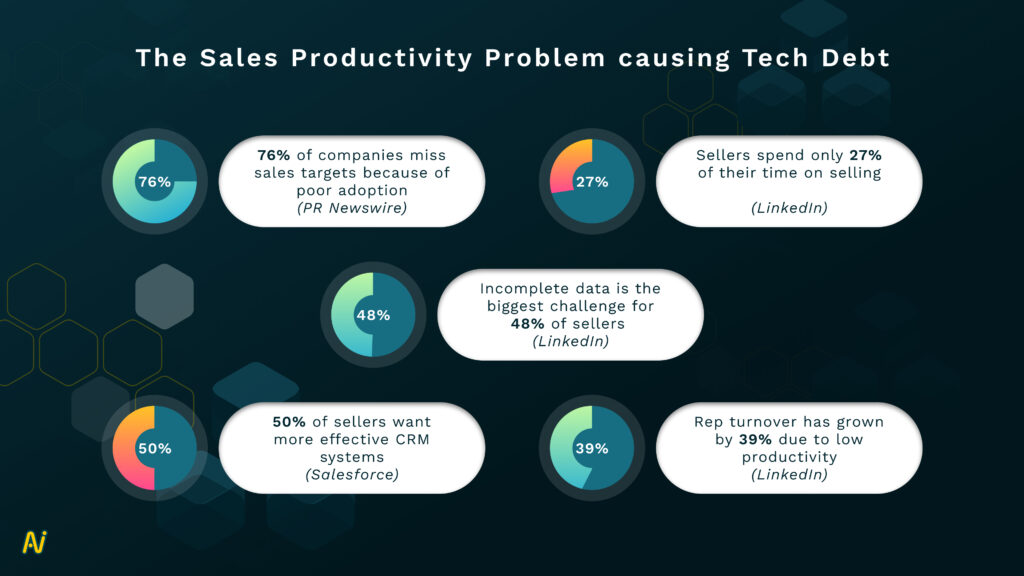
76% of companies miss achieving their sales targets because their reps don’t adopt sales tools wholeheartedly.
Unsurprisingly, manual data entry is one of the biggest culprits for poor adoption.
Reps have to get through a complicated series of tasks during the day. Many must learn to get accustomed to changing buyer preferences. Others may still be learning how to use new tools.
Sellers spend only over a quarter of their time (27%) doing their core job – selling products.
The rest of the time, they’re
- Updating CRM systems
- Finishing administrative tasks
- Or attending internal meetings and training.
a. Dirty data eventually leads to revenue leakage
When there’s so much work to do, reps may make mistakes when entering data manually into the CRM.
For nearly half of the sellers (48%), incomplete data is their biggest data challenge, followed by inaccurate CRM data (41%) and inaccurate market data (41%).
Not every seller is well-equipped to use technology to extract insights, either. About 50% of sales reps feel the need for a more effective CRM system that allows them to be more productive.
Your teams end up referring to dirty data for their insights.
b. Poor implementation begins with manager-rep disconnect
Why do reps refrain from using tools that are meant to simplify the selling process?
When you don’t purchase tools with your reps’ needs in mind, you don’t have a clear vision of how they will use the tech stack.
This disconnect between managers and frontline teams is wide. 42% of managers assume it’s clear which tool teams can use for a particular task. But only 32% of reps agree with this assumption.
Poor implementation, in turn, derives poor value from the tech stack, increasing tech debt.
c. Unfocussed reps are unhappy reps
When there are too many tools in the tech stack, reps look at multiple pages for deal updates. It divides their attention, and they’re not completely focused on selling.
Eventually, if reps are engaged in tasks that don’t directly impact their goals, they struggle with productivity. This has resulted in a growing turnover.
Sales rep turnover has increased by as much as 39% in the latter half of 2021 alone.
It’s bad for you because when reps leave the organization, they don’t close ongoing deals. And if these deals are left unattended for too long, prospects move on (aka, revenue leaves your pipeline).
Low productivity equals unhappy reps, which ultimately equals revenue leakage.
3. Missing Full Funnel Coverage
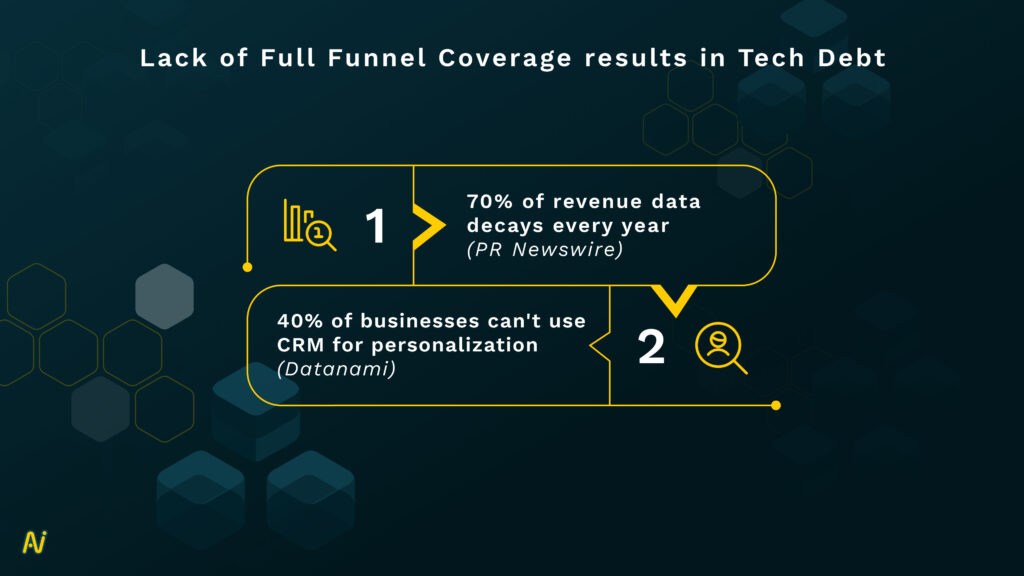
Most tools capture a lot of data from buyer-seller interactions and the buyer’s journey throughout the revenue funnel. However, this could become problematic if the tools aren’t integrated with the CRM.
a. Quality data remains stuck in adjacent tools
These tools could be:
- Inboxes
- Calendars
- Meeting notes, and other supporting platforms.
What’s worse is that 70% of this data decays every year.
Now to nurture buyer relationships, revenue teams depend on CRM data. They need it to run targeted campaigns to the right buyers.
If the CRM is plagued with inaccuracies, your teams build the ICP on an entirely unstable data foundation.
As a result:
- Marketing ends up attracting the wrong buyers.
- Sellers can’t accurately validate stakeholders in the buying group.
- Customer success can’t show buyers how much ROI they get from your product.
b. Revenue teams can’t have personalized interactions with buyers
40% of businesses can’t use CRM to drive personalization in sales deals, despite the CRM being a critical part of a revenue tech stack.
When teams don’t have clarity on account data, they could spend unnecessary time chasing unreal leads. This leaves them with few resources to take on the high-margin ones.
Consequently, customer experience takes a hit.
Your customers undergo a fragmented buying experience due to disintegrated data flow across the revenue funnel.
4. No Valuable ROI From Revenue Tools
Typically, the CRM is at the centre of all RevOps action. It’s where all customer and prospect data is stored, which is used for revenue generation.
a. Bad data affects insights
It can be troublesome when low-quality, incorrect, and unreliable data enters the CRM. You can’t draw value out of this tech stack because it doesn’t:
- Become a data-driven system for quality insights
- Provide better insights into the customer
- Coach and enable sales teams
Companies lose 10% of their annual revenue to poor-quality data in the revenue tech stack.
Next, for accurate sales forecasts, you need clean historical data. You’ll have to look beyond win rates and into:
- Audience segments
- Lead personas
- Deal size
- Sales volume
- Conversion rates
- Time to close deals
However, 44% of companies can’t access this information simply because they can’t use CRM data for advanced customer analytics. 70% of revenue leaders don’t even have confidence in the accuracy of their CRM data.
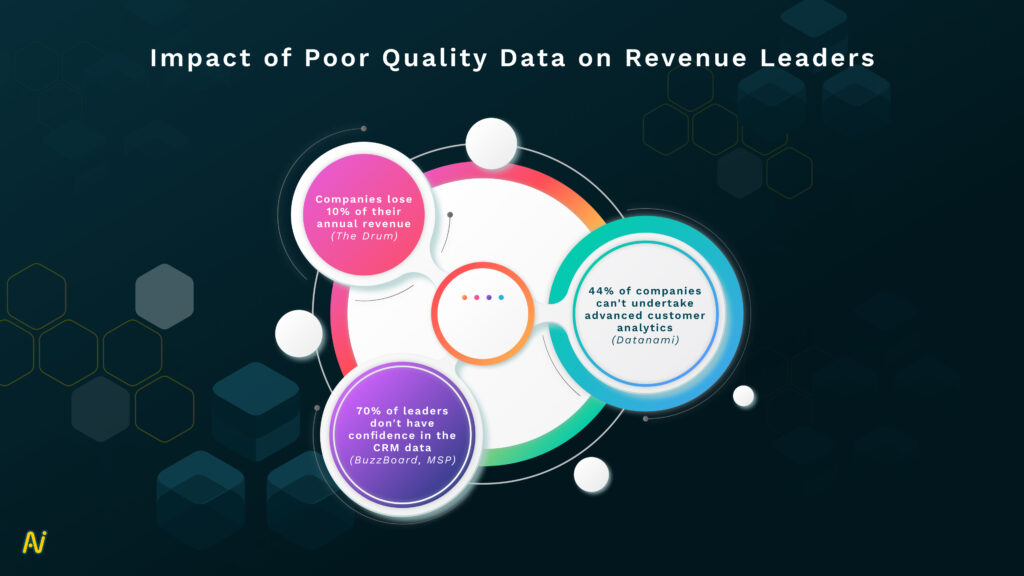
b. Distrust in CRM data leads to poor ROI
If you can’t trust the data in your revenue system, you can’t optimize resources to capture better ROI.
Consider this. A sales leader sees reps doing exceptionally well at cold outreach. But something isn’t going right because their win rates are poor.
If the leader could check why reps are falling short in certain areas, they could coach them to overcome mistakes. They could also keep coaching a weekly activity so reps get the most out of their tech stack.
Lack of quality data, however, dampens any plans for achieving high ROI because of tech debt.
Solve Tech Debt With an Upstream Focus On Your Data Quality
Growth remains a key business goal in 2023’s uncertain economic scenario. But it’s an uphill endeavour when investors are more inclined to find out how you can drive profitability.
You can provide them with visibility only if you have complete visibility into your own daily operations.
Data is the key to unlocking this comprehensive clarity. But poor data quality presents sizeable challenges to revenue growth:
- 44% of CRM users estimate that their company loses over 10% of its annual revenue due to bad data (VentureBeat)
- 74% of businesses say improving data management is important to maintain their financial and competitive edge (EDQ)
- 36% of organizations cite fragmented data as a challenge to business growth. (Mulesoft)
- $13 million revenue is lost annually due to poor-quality data. (Gartner)
This is why facilitating data hygiene puts you in a better position to resolve revenue leakage arising out of tech debt. Leveraging data for business streamlines the end-to-end revenue process, breaking down operational silos and improving efficiency.
Organizations using data-driven insights are 8.5 times more likely to see at least 20% revenue growth.
So, what’s the ultimate impact of clean data on tech debt?
Focus on Clean Data to Make Your Tech Stack Work Smarter
Focusing on clean and complete data in core systems, like the CRM, can solve many tech debt challenges.
Businesses are realizing this and turning to RevOps to make the tech stack work in their favor. It must align the entire organization to the revenue funnel (customer’s life cycle).
Before purchasing the tools, however, the first step to reducing tech debt is actually starting with clean data.
It avoids many problems that will crop up later, including the ones we discussed above – low ROI, low productivity, poor decision-making, poor customer experience, and more.
If your foundation (aka clean and complete data) is solid, the tech stack you build gets stronger with every tool you add.
Then, you can add the rest of the parts to the RevOps machine. When you reach this phase, purchase tools that are the best of the breed. Instead of going for one vendor with several ancillary offerings, look at the one capability in which they’re a cut above the rest.
These are the essential components to build a solid RevOps tech stack:
- CRM
- Sales Engagement
- Forecasting
- Conversational Intelligence (such as Call Analytics)
- Sales Enablement (such as Coaching)
- Marketing Platform
- Customer Success Platform
But what impact can a tech stack fuelled by clean data deliver? Here are some use cases (product-enabled possibilities) to consider for reducing tech debt.
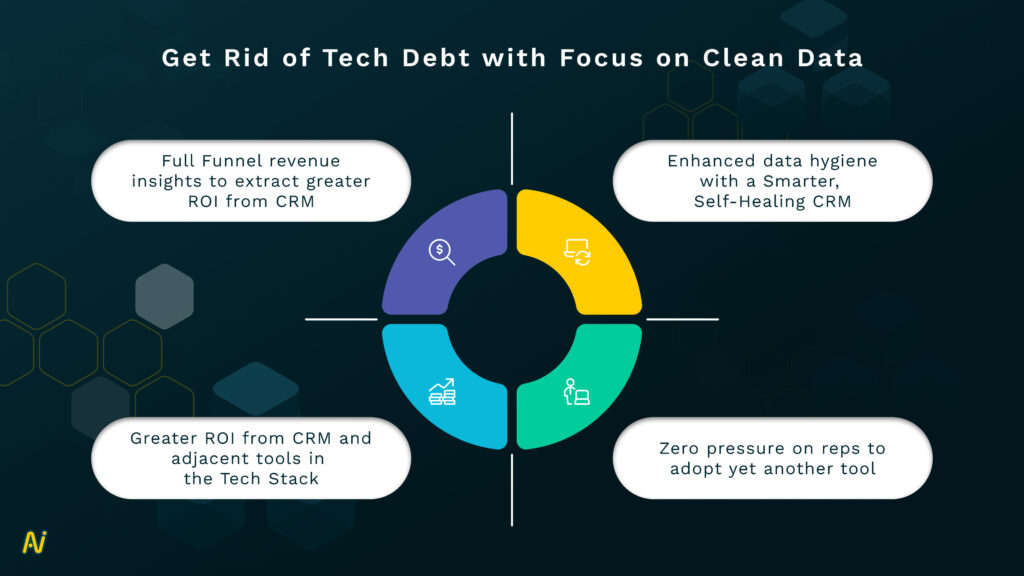
1. Enhanced data hygiene with a self-healing CRM
A smarter, self-healing CRM will automatically:
- Sort through existing data
- Scour first-party conversations
- Detect irregularities, anomalies, duplicates, and other errors
- Constantly update the system with missing data
It keeps your contact and account data qualitative at all times.
Clean data is credible. Therefore, it can be trusted to show where a buyer is in their journey. Your revenue teams can then segment buyers accurately and personalize the approach for each segment.
Your tech stack could follow strict data requirements to ensure CRM captures clean data.
You can run routine reports and filter out data inefficiencies when importing or migrating data.
So, your system contains only what’s relevant, valuable, and essential for your selling process.
This gives you enriched and actionable data in your CRM.
2. Zero Pressure on Reps to Adopt Yet Another Tool
With clean data at your fingertips, you can:
- Figure out what’s realistically possible for your revenue teams to achieve
- Design processes around your sales cycle, pipeline velocity, and similar KPIs.
Once this process is mapped out, you can figure out what you need from tools to win more deals.
When the option presents itself, RevOps experts swear by automated solutions. They will do all the work for reps, easily developing an efficient sales process.
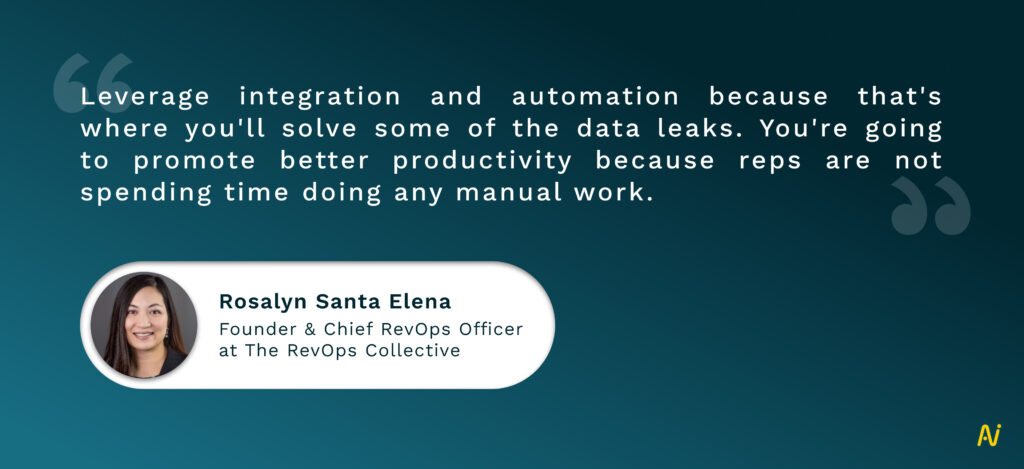
An automated CRM solution identifies gaps in the data, captures missing information, and adds this to the system – all without rep intervention.
What’s more, it creates a complete pipeline.
High-performing teams are reaping the rewards of sales automation. 61% of overperforming leaders use it to capture competitive data and improve their sales playbook.
Take a look at the example to understand how automation saves the day.
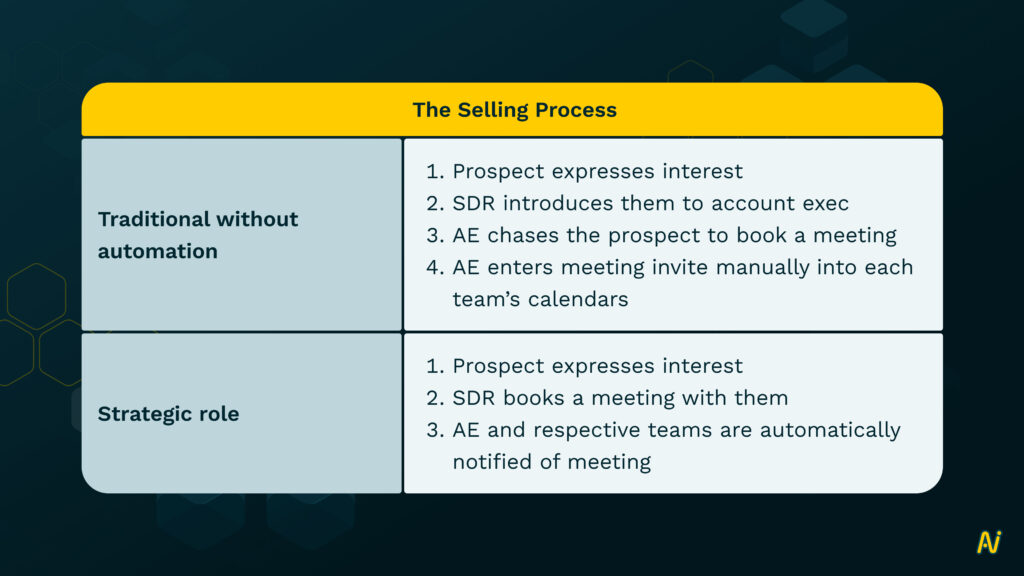
The ultimate goal is to simplify the revenue generation process as much as possible, putting zero pressure on reps to adopt new tools frequently.
3. Greater ROI From CRM and Adjacent Tools in the Tech Stack
You can capture granular quantitative and qualitative information into the CRM from tools across the tech stack.
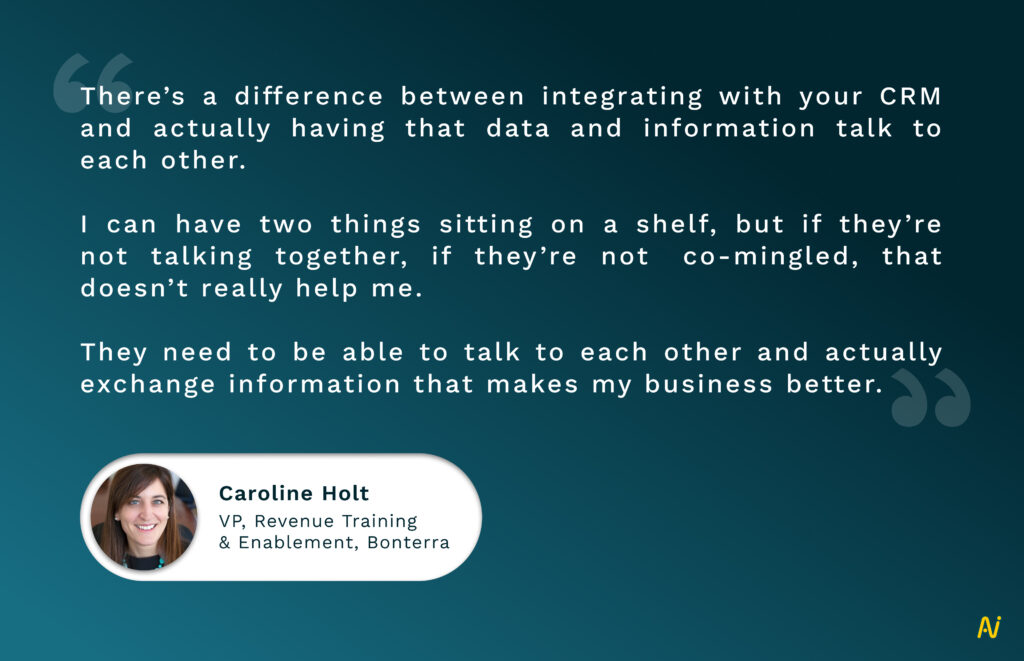
For instance, from buyer communication tools, you can find out:
- What customers tell you over sales calls, social media, email outreach, and Slack
- Systematically extract this information and analyze what’s working for you.
You can fuel predictable revenue by compiling comprehensive contact data, pipeline opportunities, and high-intent sales deals into a single dashboard.
For any tech stack in 2023, the theme is going lean – doing more with less.
Better integrated revenue tech stacks will, thus, be crucial for delivering exceptional buyer experience.
4. Full Funnel Revenue Insights to Extract Greater ROI From CRM
RevOps can unify data across the tech stack. Unified data combines data from siloed systems into a single source of truth. It brings everyone on the same page through full-funnel revenue insights.
Not just that, you can also:
- Derive better customer engagement
- Increase ARR from clean data across the tech stack
- Tackle customer churn by analyzing churn patterns
- Improve sales efficiency through intelligent recommendations
When revenue teams have access to such high-quality insights, they can understand what motivates customers to purchase.
This helps create a strategy with the buyer in mind rather than trying to push a purely sales-led agenda.
You can point revenue teams to key stakeholders in the buying committee. Sales and marketing can then provide customized value for effective multithreading.
For instance, if a CMO leaves the buyer group, your teams are instantly notified of this change. You can then update your revenue tech stack with the new CMO’s contact and nurture the buyer-seller relationship with relevant content.
Let Nektar Solve the Tech Debt Problem for You
Nektar ensures that clean, accurate, and reliable data enters your revenue system via its no-code activity capture solution, Data+.
- Data+ collects historical data from day 1 of implementation without any involvement from reps.
- It uses self-healing to update its original actions continually.
- Any changes are captured and updated in Salesforce in real time.
- All the data collected in Salesforce is synced to standard fields, making it easily reportable.
It’s time to say goodbye to revenue leakage and tech debt. See how we can help you minimize your tech debt with clean and complete data.

